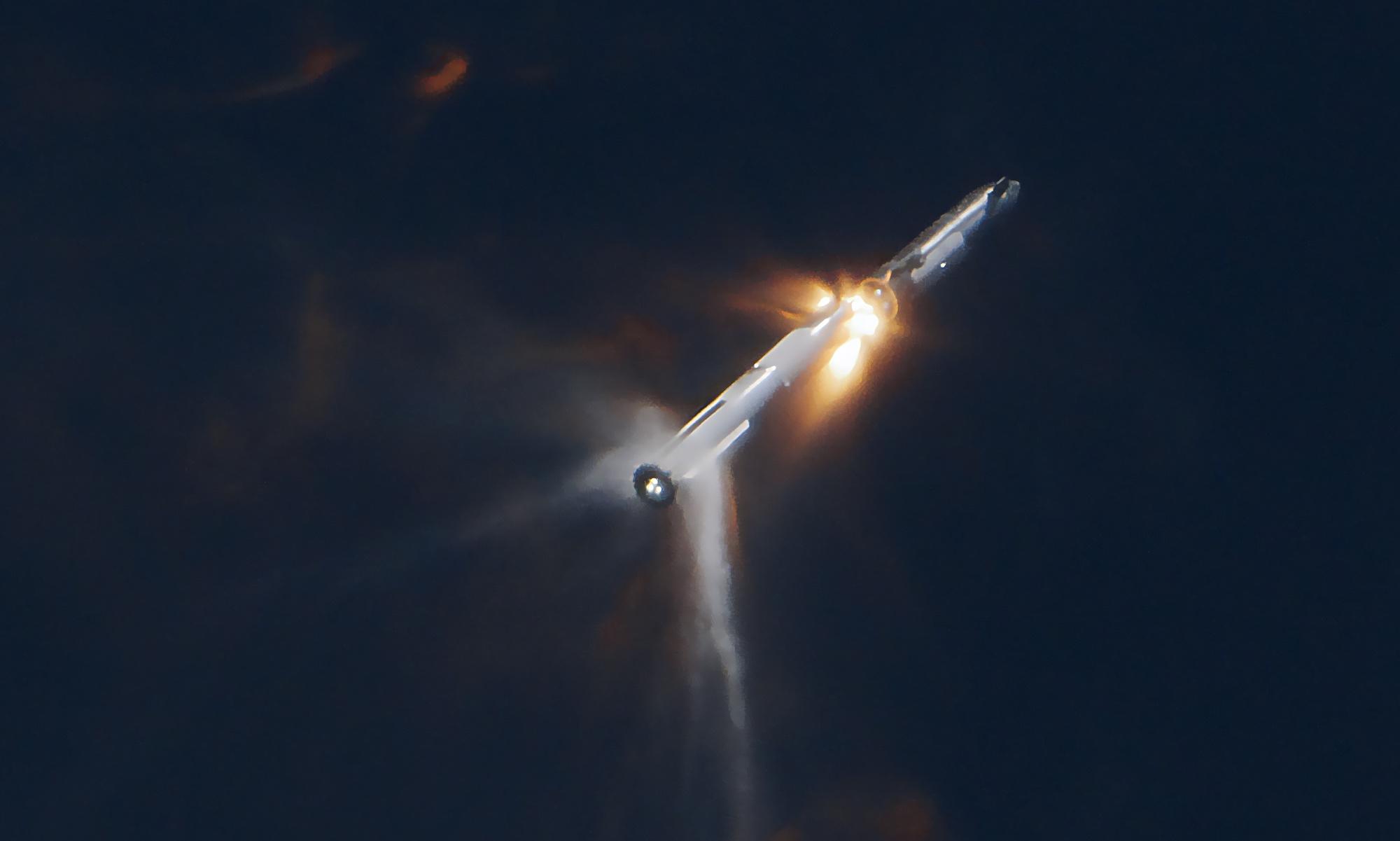Products You May Like
WASHINGTON — SpaceX Chief Executive Elon Musk says a propellant dump caused the destruction of the Starship upper stage on a November test flight, giving him confidence that the vehicle can reach orbit on its next launch.
On that Nov. 18 launch, the Starship upper stage, or ship, was nearing the end of its burn to place it on a long suborbital trajectory when contact was lost. Hosts of the SpaceX webcast said it appeared the automated flight termination system was activated, but did not give a reason why, and the company provided few details since.
At a recent event at SpaceX’s Starbase test site in Boca Chica, Texas, video of which SpaceX posted on social media Jan. 12, Musk said the failure was linked to venting liquid oxygen propellant near the end of the burn. That venting, he said, was needed only because the vehicle was not carrying any payload.
“Flight 2 actually almost made it to orbit,” he said. “If it had a payload, it would have made it to orbit because the reason that it actually didn’t quite make it to orbit was we vented the liquid oxygen, and the liquid oxygen ultimately led to a fire and an explosion.”
That venting, he said, would have been unnecessary if the ship had a payload, presumably because it would have been consumed by the Raptor engines on the vehicle in order to reach orbit. He didn’t elaborate on how the venting triggered the fire, or discuss the explosion of the Super Heavy stage shortly after stage separation.
Musk said that failure mode gave him confidence for the next Starship test flight. “I think we’ve got a really good shot of reaching orbit with Flight 3,” he said.
That third flight is currently projected for February, SpaceX’s Jessica Jensen during a Jan. 9 NASA briefing, pending receipt of an updated launch license from the Federal Aviation Administration. Musk described a more ambitious flight plan for the mission with additional tests of Starship.
“We want to get to orbit and we want to do an in-space engine burn from the header tank” at the top of the vehicle, he said. Doing so would “prove that we can reliably deorbit.”
The flight would also test transferring propellant from that header tank to the main propellant tank, a demonstration that is part of a NASA Tipping Point award as a milestone towards transferring propellant from one Starship vehicle to another. The first ship-to-ship propellant transfer test is planned, he said, “hopefully by the end of this year, but certainly by next year.”
Musk said SpaceX will test the “Pez dispenser” payload door that will be used on later flights to deploy the full-sized Starlink V2 satellites, significant larger than the V2 mini satellites currently being launched on Falcon 9. “We do hope to do this by the end of this year,” he said of launching Starlink V2 satellites.
Those Starship tests will take place as SpaceX continues to increase the launch rate of Falcon 9 and Falcon Heavy. The company performed 96 Falcon launches in 2023 and Musk said the company was planning “150 flights or thereabouts” in 2024. Company executives previously set a goal of 144 launches, or 12 per month, for 2024.
That flight rate will include a planned turnaround of less than 24 launches between launches from the same pad by the end of the year. Musk added SpaceX was working to qualify Falcon 9 boosters to perform 40 flights. The company has, to date, flown the same booster up to 19 times.
